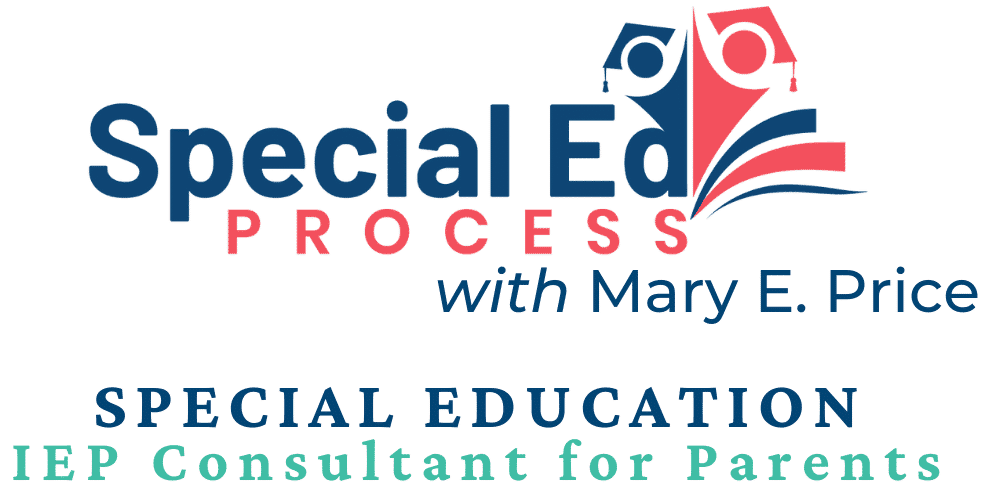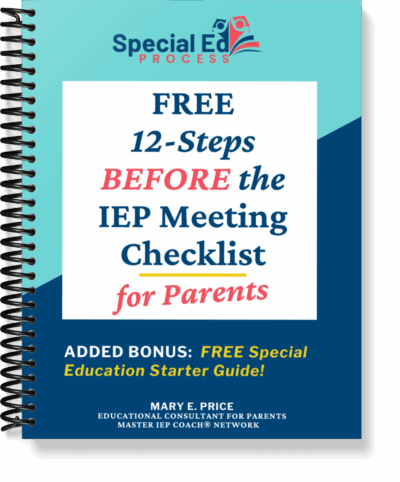13 IDEA Special Education Disability Catagories – Child With A Disability

For most parents, determining whether their child qualifies for special education can be very confusing. Use this article to get an overview of how the Individuals with Disabilities Education Act (IDEA) defines Child with a Disability and the 13 eligibility categories.
Read This Article If You Want To Know …
- Where to find more in-depth information about Child with a Disability
- The definition of Child with a Disability
- A general description of the 13 disability categories
- The key phrase that determines eligibility for services
Where to find more in-depth information about Child with a Disability
The complete definition of Child with a disability is found at 34 CFR §300.8 [U.S. Department of Education: https://sites.ed.gov/idea/regs/b/a/300.8]
CFR means Code of Federal Regulations. The symbol § means Section. When you see §§ it means more than one Section.
Definition of Child with a Disability
Generally speaking, child with a disability means a child evaluated in accordance with federal regulations §§300.304 through 300.311 as having –
- autism
- deaf-blindness
- deafness
- emotional disturbance
- hearing impairment (including deafness)
- intellectual disability
- multiple disabilities
- orthopedic impairment
- other health impairment
- specific learning disability
- speech or language impairment
- traumatic brain injury
- visual impairment
and who, by reason thereof, needs special education and related services. This last sentence plays a critical role in determining eligibility for special education and related services.
A General Description of the 13 Disability Catagories
Autism
Autism means a developmental disability significantly affecting verbal and nonverbal communication and social interaction, generally evident before age three, that adversely affects a child’s educational performance. Other characteristics often associated with autism are engagement in repetitive activities and stereotyped movements, resistance to environmental change or change in daily routines, and unusual responses to sensory experiences.
Deaf-Blindness
Deaf-blindness means concomitant hearing and visual impairments, the combination of which causes such severe communication and other developmental and educational needs that they cannot be accommodated in special education programs solely for children with deafness or children with blindness.
Deafness
Deafness means a hearing impairment that is so severe that the child is impaired in processing linguistic information through hearing, with or without amplification, that adversely affects a child’s educational performance.
Emotional Disturbance
Emotional disturbance means a condition exhibiting one or more of the following characteristics over a long period of time and to a marked degree that adversely affects a child’s educational performance —
(A) An inability to learn that cannot be explained by intellectual, sensory, or health factors. (B) An inability to build or maintain satisfactory interpersonal relationships with peers and teachers. (C) Inappropriate types of behavior or feelings under normal circumstances. (D) A general pervasive mood of unhappiness or depression. (E) A tendency to develop physical symptoms or fears associated with personal or school problems.
Emotional disturbance includes schizophrenia. The term does not apply to children who are socially maladjusted unless it is determined that they have an emotional disturbance.
Hearing Impairment (including deafness)
Hearing impairment means an impairment in hearing, whether permanent or fluctuating, that adversely affects a child’s educational performance but that is not included under the definition of deafness in this section.
Intellectual Disability
Intellectual disability means significantly subaverage general intellectual functioning, existing concurrently with deficits in adaptive behavior and manifested during the developmental period, that adversely affects a child’s educational performance. The term “intellectual disability” was formerly termed “mental retardation.”
Multiple Disabilities
Multiple disabilities means concomitant impairments (such as intellectual disability-blindness or intellectual disability-orthopedic impairment), the combination of which causes such severe educational needs that they cannot be accommodated in special education programs solely for one of the impairments. Multiple disabilities does not include deaf-blindness.
Orthopedic Impairment
Orthopedic impairment means a severe orthopedic impairment that adversely affects a child’s educational performance. The term includes impairments caused by a congenital anomaly, impairments caused by disease (e.g., poliomyelitis, bone tuberculosis), and impairments from other causes (e.g., cerebral palsy, amputations, and fractures or burns that cause contractures).
Other Health Impairment
Other health impairment (OHI) means having limited strength, vitality, or alertness, including a heightened alertness to environmental stimuli, that results in limited alertness with respect to the educational environment, that—
Is due to chronic or acute health problems such as asthma, attention deficit disorder or attention deficit hyperactivity disorder, diabetes, epilepsy, a heart condition, hemophilia, lead poisoning, leukemia, nephritis, rheumatic fever, sickle cell anemia, and Tourette syndrome; and adversely affects a child’s educational performance.
Specific Learning Disability
Specific learning disability (SLD) means a disorder in one or more of the basic psychological processes involved in understanding or in using language, spoken or written, that may manifest itself in the imperfect ability to listen, think, speak, read, write, spell, or to do mathematical calculations, including conditions such as perceptual disabilities, brain injury, minimal brain dysfunction, dyslexia, and developmental aphasia.
Specific learning disability does not include learning problems that are primarily the result of visual, hearing, or motor disabilities, of intellectual disability, of emotional disturbance, or of environmental, cultural, or economic disadvantage.
Speech or Language Impairment
Speech or language impairment means a communication disorder, such as stuttering, impaired articulation, a language impairment, or a voice impairment, that adversely affects a child’s educational performance.
Traumatic Brain Injury
Traumatic brain injury means an acquired injury to the brain caused by an external physical force, resulting in total or partial functional disability or psychosocial impairment, or both, that adversely affects a child’s educational performance.
Traumatic brain injury applies to open or closed head injuries resulting in impairments in one or more areas, such as cognition; language; memory; attention; reasoning; abstract thinking; judgment; problem-solving; sensory, perceptual, and motor abilities; psychosocial behavior; physical functions; information processing; and speech.
Traumatic brain injury does not apply to brain injuries that are congenital or degenerative, or to brain injuries induced by birth trauma.
Visual Impairment (including blindness)
Visual impairment including blindness means an impairment in vision that, even with correction, adversely affects a child’s educational performance. The term includes both partial sight and blindness.
The Key Phrase That Determines Eligibility
The most important thing to understand is that simply having one or more of the disabilities above does not mean your child automatically qualifies for special education.
Eligibility hinges on the following phrase, “who, by reason thereof, needs special education and related services.” Your child must have a qualifying disability that significantly impacts their ability to learn.
If your child’s disability does not significantly impact their ability to learn, the school may provide services under Section 504 of the Rehabilitation Act (Section 504).
To recap, this article provided information about ‘Child with a Disability’ and the 13 Disability Categories
- Where to find in-depth information about ‘Child with a Disability’
- The definition of a ‘Child with a Disability’
- A general description of the 13 disability categories
- The key phrase that determines eligibility for services
In closing, the information above is meant to provide an overview of how eligibility for special education is determined. The key takeaway is that having a disability does not mean your child automatically qualifies for special education. Your child must have a qualifying disability that significantly impacts their ability to learn.
Disclaimer: Mary Price is not an attorney or legal expert. Special Ed Process does not offer legal advice. Click here for Full Disclaimer.


